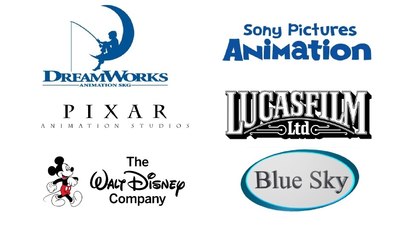www.awn.com/news/adobe-acquires-french-3d-creative-tool-developer-allegorithmic

a blog of links related to computer animation and production technology Sponsored by ReelMatters.com

3Dprinting (168) A.I. (618) animation (338) blender (186) colour (225) commercials (45) composition (149) cool (357) design (622) Featured (63) hardware (299) IOS (108) jokes (134) lighting (275) modeling (111) music (183) photogrammetry (168) photography (741) production (1228) python (84) quotes (483) reference (303) software (1313) trailers (290) ves (517) VR (219)
Category: ves
-
Skydance Distribution Partner Paramount Shocked by John Lasseter Hire
www.awn.com/news/report-skydance-distribution-partner-paramount-shocked-lasseter-hire
www.awn.com/news/john-lasseter-named-head-skydance-animation
https://www.awn.com/news/lasseter-deeply-sorry-my-actions
https://www.awn.com/news/mirielle-soria-paramount-animation-staffers-not-obligated-work-lasseter
-
The Public Domain Is Working Again — No Thanks To Disney
www.cartoonbrew.com/law/the-public-domain-is-working-again-no-thanks-to-disney-169658.html
The law protects new works from unauthorized copying while allowing artists free rein on older works.
The Copyright Act of 1909 used to govern copyrights. Under that law, a creator had a copyright on his creation for 28 years from “publication,” which could then be renewed for another 28 years. Thus, after 56 years, a work would enter the public domain.
However, the Congress passed the Copyright Act of 1976, extending copyright protection for works made for hire to 75 years from publication.
Then again, in 1998, Congress passed the Sonny Bono Copyright Term Extension Act (derided as the “Mickey Mouse Protection Act” by some observers due to the Walt Disney Company’s intensive lobbying efforts), which added another twenty years to the term of copyright.
it is because Snow White was in the public domain that it was chosen to be Disney’s first animated feature.
Ironically, much of Disney’s legislative lobbying over the last several decades has been focused on preventing this same opportunity to other artists and filmmakers.The battle in the coming years will be to prevent further extensions to copyright law that benefit corporations at the expense of creators and society as a whole.
-
21st Century Fox and Disney Shareholders Approve Historic Merger
www.awn.com/news/21st-century-fox-and-disney-shareholders-approve-historic-merger
Disney’s $71 billion cash and stock bid is approved by stockholders of both companies along with agreement to spin-off the new ‘Fox.’
-
Editorial Employees at Nickelodeon Animation Studio Unionize
https://www.awn.com/news/editorial-employees-nickelodeon-animation-studio-unionize
The editorial employees of Nickelodeon Animation Studio have overwhelmingly elected to unionize with the Motion Picture Editors Guild, Local 700 of the International Alliance of Theatrical Stage Employees. Nickelodeon has agreed to recognize the editors’ union after an arbitrator verified that a majority of employees had signed union authorization cards.
Nickelodeon Animation Studios produces animated episodic programming such as SpongeBob SquarePants, The Loud House, Rise of the Teenage Mutant Ninja Turtles and Shimmer and Shine.
The newly unionized positions encompass a range of pre-production and post-production roles. Recording engineers and dialogue editors record and arrange voice actors’ dialogue prior to animation. Animatic editors work in pre-production to assemble storyboards and soundtracks in a pre-visualization of the finished show. Picture editors cut the completed color animation. And machine room employees manage the elements and equipment used in the creation of shows.
-
Kevin Geiger on Chinese animation growth
https://www.awn.com/blog/chinas-changing-game
China is a work in progress. China is changing, and Chinese capability and pride are rising. And with that rise, China’s cultural, media/tech, and sociopolitical landscapes are rapidly morphing. It’s incumbent upon anyone in China – native or foreign – to roll with those changes.
To wit on the media front, China announced that its State Administration of Press, Publication, Radio, Film & Television (the unfortunate acronym “SAPPRFT” for short), will be abolished in favor of even tighter control under a new body at the cabinet level.
To interact successfully and satisfyingly here, you have to gain some real local perspective and develop an alternate set of instincts that are relevant for this reality as it is, not what you imagine it to be.
Collections
| Explore posts
| Design And Composition
| Featured AI
Popular Searches
unreal | pipeline | virtual production | free | learn | photoshop | 360 | macro | google | nvidia | resolution | open source | hdri | real-time | photography basics | nuke
FEATURED POSTS
-
Photography basics: Production Rendering Resolution Charts
-
Photography basics: Lumens vs Candelas (candle) vs Lux vs FootCandle vs Watts vs Irradiance vs Illuminance
-
Film Production walk-through – pipeline – I want to make a … movie
-
Glossary of Lighting Terms – cheat sheet
-
copypastecharacter.com – alphabets, special characters and symbols library
-
NVidia – High-Fidelity 3D Mesh Generation at Scale with Meshtron
-
Scene Referred vs Display Referred color workflows
-
Want to build a start up company that lasts? Think three-layer cake
Social Links
DISCLAIMER – Links and images on this website may be protected by the respective owners’ copyright. All data submitted by users through this site shall be treated as freely available to share.


